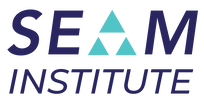Volume 2, Issue 1
Editor's CommentsAlla Heorhiadi, PhD, EdD
|
The Socio-Economic Approach to Management (SEAM) was developed by Henri Savall in 1973 as the result of his two
doctoral theses. For over four decades Savall and his colleagues from the ISEOR research center in Lyon, France, have been honing
and advancing this unique approach to managing and changing organizations. To convey the essence of this complex discipline in
one sentence, one could say that the discipline teaches how to balance the socio and economic sides of organizations and how to
uncover an organization’s hidden costs and convert them into value added of immediate results and creation of future potential.
SEAM proved to be the most sustainable organizational change approach that improves socio-economic performance of
organizations. And this is not just an empty statement. The SEAM theory has been tested through socio-economic interventions in 1,854 organizations of different sizes, in 72 industries across 42 countries. The results from all interventions are documented and constitute the more than 40-year old database that has been continuously analyzed, adding more support to the
SEAM theory.
Recently Henri Savall, has received the Legion of Honor award in the rank of Chevalier from the Ministry of Education, Higher Education, and Research (pictured below). The Legion of Honor (Ordre national de la Légion d’honneur), is the highest award in France. It was established in 1802 by Napoleon Bonaparte to recognize prominent military and civil service to France. The order has five ranks:
Chevalier (Knight), Officier (Officer), Commandeur (Commander), Grand Officier (Grand Officer), and Grand-Croix (Grand Cross). This high national recognition was given to Henri Savall for many years of work to create a more humane economy, a more socially
responsible capitalism, a more ethical social life, and a more citizen-oriented and less elitist universities, nationally and internationally.
Henri Savall, Professor Emeritus of Management Sciences at the University Lyon 3, Founding President of ISEOR
Our journal published Savall’s work in the past and will keep presenting his brilliant ideas in the future issues. The current issue introduces the philosophical and economic sources of the socio-economic theory, information that is very difficult to find in English. Savall’s thinking is inspirational in that it challenges traditional established beliefs and theories that people have used without revisiting for years. He pushes the limits of what is possible and acceptable. It is my hope that more people become familiar with the discipline of socio-economic management and its roots.
Another person who pushes the limits of what is considered possible is the artist from Belgium Ben Heine, whose artwork is featured
in this issue. He is also a founder of a pioneering approach, although in visual art. He developed his Pencil Vs. Camera technique in 2010 and since then, the technique kept advancing and spreading among other artists and followers (read more about him in this issue). Hopefully his creative ideas, represented in mind-boggling images of the current issue along with just an aesthetic pleasure will inspire others to experiment, revisit, challenge, and expand the world in which we live.
Why do I mention these two seemingly different people? They both help us see familiar things differently. Ben Heine’s work provides
a new way of perceiving the world. What is real and what is added from the way we shape our vision? His work is an artistic challenge to us, to think about what is real and what might be illusion.
Henri Savall provides a new way of looking at economics, organizational performance, and human potential. He challenges beliefs that usually are not questioned. For instance, the predominant economic beliefs lead to levels of unemployment which are not necessary.
Unemployment is the unavoidable result of a flawed economic vision. Helping people reach their human potential is also important for economic growth. Helping people reach their human potential is an ethical requirement for a healthy society. Those are but two of the assumptions of modern life that Savall questions. I invite you to explore them, and maybe the outcome will be an approach to work and life that is transformational. It has been for me.
Alla Heorhiadi, PhD, EdD
doctoral theses. For over four decades Savall and his colleagues from the ISEOR research center in Lyon, France, have been honing
and advancing this unique approach to managing and changing organizations. To convey the essence of this complex discipline in
one sentence, one could say that the discipline teaches how to balance the socio and economic sides of organizations and how to
uncover an organization’s hidden costs and convert them into value added of immediate results and creation of future potential.
SEAM proved to be the most sustainable organizational change approach that improves socio-economic performance of
organizations. And this is not just an empty statement. The SEAM theory has been tested through socio-economic interventions in 1,854 organizations of different sizes, in 72 industries across 42 countries. The results from all interventions are documented and constitute the more than 40-year old database that has been continuously analyzed, adding more support to the
SEAM theory.
Recently Henri Savall, has received the Legion of Honor award in the rank of Chevalier from the Ministry of Education, Higher Education, and Research (pictured below). The Legion of Honor (Ordre national de la Légion d’honneur), is the highest award in France. It was established in 1802 by Napoleon Bonaparte to recognize prominent military and civil service to France. The order has five ranks:
Chevalier (Knight), Officier (Officer), Commandeur (Commander), Grand Officier (Grand Officer), and Grand-Croix (Grand Cross). This high national recognition was given to Henri Savall for many years of work to create a more humane economy, a more socially
responsible capitalism, a more ethical social life, and a more citizen-oriented and less elitist universities, nationally and internationally.
Henri Savall, Professor Emeritus of Management Sciences at the University Lyon 3, Founding President of ISEOR
Our journal published Savall’s work in the past and will keep presenting his brilliant ideas in the future issues. The current issue introduces the philosophical and economic sources of the socio-economic theory, information that is very difficult to find in English. Savall’s thinking is inspirational in that it challenges traditional established beliefs and theories that people have used without revisiting for years. He pushes the limits of what is possible and acceptable. It is my hope that more people become familiar with the discipline of socio-economic management and its roots.
Another person who pushes the limits of what is considered possible is the artist from Belgium Ben Heine, whose artwork is featured
in this issue. He is also a founder of a pioneering approach, although in visual art. He developed his Pencil Vs. Camera technique in 2010 and since then, the technique kept advancing and spreading among other artists and followers (read more about him in this issue). Hopefully his creative ideas, represented in mind-boggling images of the current issue along with just an aesthetic pleasure will inspire others to experiment, revisit, challenge, and expand the world in which we live.
Why do I mention these two seemingly different people? They both help us see familiar things differently. Ben Heine’s work provides
a new way of perceiving the world. What is real and what is added from the way we shape our vision? His work is an artistic challenge to us, to think about what is real and what might be illusion.
Henri Savall provides a new way of looking at economics, organizational performance, and human potential. He challenges beliefs that usually are not questioned. For instance, the predominant economic beliefs lead to levels of unemployment which are not necessary.
Unemployment is the unavoidable result of a flawed economic vision. Helping people reach their human potential is also important for economic growth. Helping people reach their human potential is an ethical requirement for a healthy society. Those are but two of the assumptions of modern life that Savall questions. I invite you to explore them, and maybe the outcome will be an approach to work and life that is transformational. It has been for me.
Alla Heorhiadi, PhD, EdD

